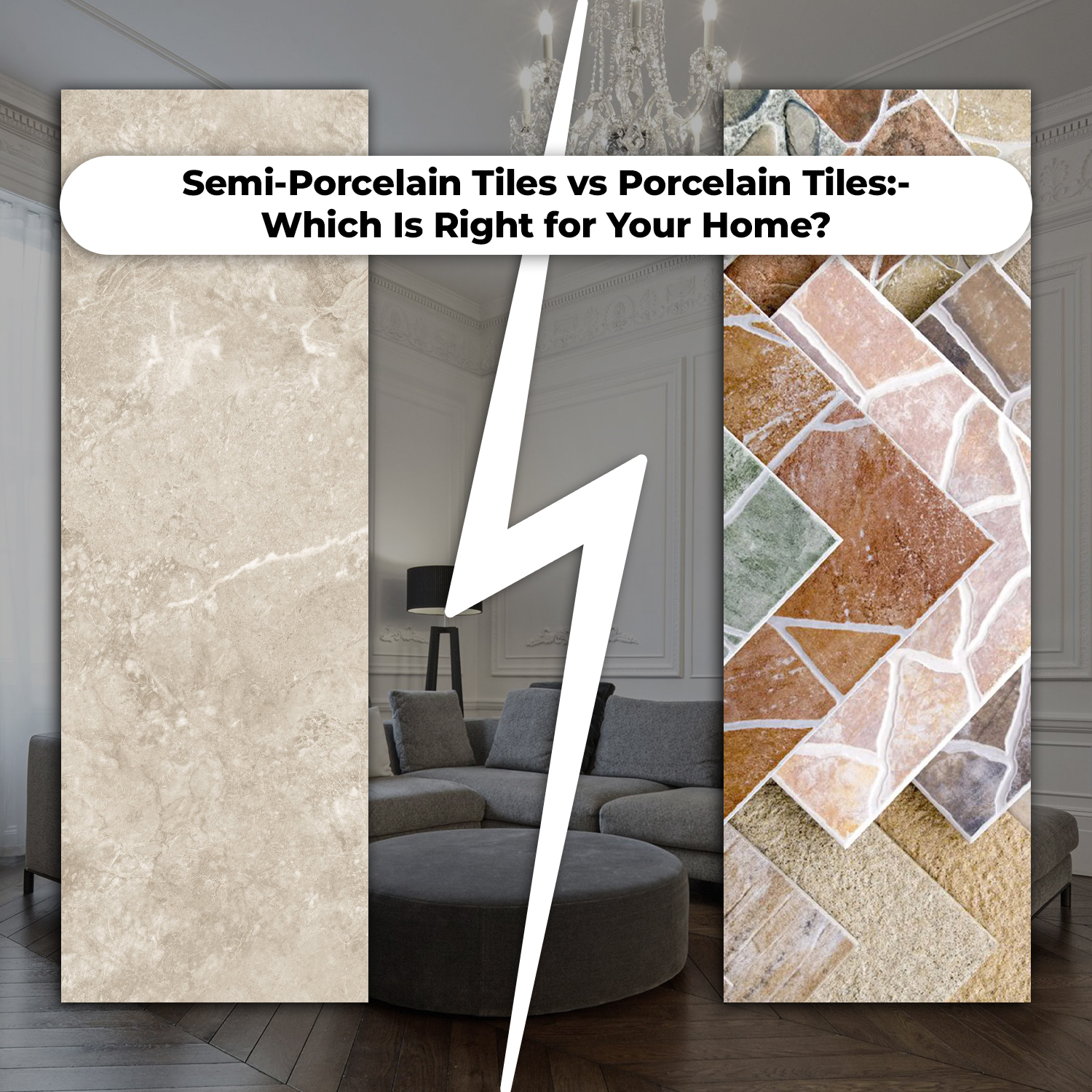Most homeowners need to decide between either semi-porcelain tiles or porcelain tiles for their home project. The durability and decorative aspects between these two tile types match fairly well but certain distinctions make them suitable for specific settings. Understanding these tiles’ composition as well as their advantages and perfect uses will lead you to an informed selection.
What Are Semi-Porcelain Tiles?
The manufacturing process of semi-porcelain tiles provides traits from ceramic tiles alongside porcelain tiles due to its production methodology. Semi-porcelain tiles emerge after the production process incorporates clay and minerals under the same temperatures that porcelain tiles require for firing. The firing process at lower temperatures creates slightly porous tiles which maintain their high level of durability. Once fired the tiles gain an attractive glazed appearance.
Semi-porcelain tiles prove their value because they easily adapt to different environments. These tiles work equally well in residential dwellings as well as lighter commercial spaces because they provide cost-effective sophistication for house owners.
What Are Porcelain Tiles?
The material quality of porcelain tiles includes high density together with minimal water absorption properties. Fired at higher temperatures during production porcelain tiles receive refined clay to create tiles with excellent density because they have fewer pores than semi-porcelain tiles. Outdoor spaces along with kitchens and bathrooms benefit best from these tiles because of their density structure.
High-traffic areas mainly use porcelain tiles because of their long-lasting quality. Each porcelain tile variety comes either glazed or unglazed so users can choose finishes that match diverse design aesthetics.
Differences Between Semi-Porcelain and Porcelain Tiles
Water Absorption
Porcelain tiles resist moisture better because they absorb low amounts of water compared to other tiles. The water absorption rate of semi-porcelain tiles reaches higher levels than porcelain tiles thus affecting their suitability for wet areas.
Durability
Because of their superior resilience to scratching Porcelain tiles prove an excellent selection for busy floors. Semi-porcelain tiles provide excellent durability yet remain less resistant to hard usage than porcelain tiles.
Installation
Due to their slightly softer composition semi-porcelain tiles become easier to work with when cutting and installing. Through their denser nature porcelain tiles demand specialist cutting equipment for correct installation.
Maintenance
Wet maintenance needs of semi-porcelain tiles match those of porcelain tiles however porcelain tiles provide better resistance to stains. Regular cleaning with gentle detergents remains sufficient to preserve tiles in a fresh state.
Cost
Pricewise semi-porcelain tiles fall below porcelain tiles in the market. Semi-porcelain tiles represent a valuable choice for flooring since they are both affordable and durable.
Where to Use Semi-Porcelain Tiles
Living rooms: They provide a warm and inviting appearance, complementing various interior designs.
Bedrooms: The slightly softer texture makes them comfortable underfoot.
Dining areas: Their glazed surface resists spills and stains, making them ideal for spaces where food and drinks are common.
Where to Use Porcelain Tiles
Bathrooms: Due to their low water absorption, porcelain tiles prevent moisture buildup and mold growth.
Kitchens: Resistant to spills and high temperatures, these tiles perform well in cooking areas.
Outdoor spaces: The weather-resistant properties make them suitable for patios and balconies.
Selecting the proper tile matches your house requirements
Your particular requirements will determine whether you should pick semi-porcelain tiles or porcelain tiles. Semi-porcelain tiles provide excellent value with their versatility so they are a suitable option for those who need cost-effective solutions. A porcelain tile would be more suitable for your project when durability and moisture resistance are essential requirements.
Your tile selection needs to include an examination of how much traffic occurs and how much moisture exposure your tiles will face together with maintenance needs. Professional consultations or showroom visits will assist you in choosing the suitable tile for your space because they help you review tiles in person.
Conclusion
The distinct advantages of semi-porcelain tiles and porcelain tiles fit specific residential areas of a house. An informed decision becomes possible through a clear understanding of the duration, water resilience and financial aspects of these tiles. Which type of flooring material you prefer between semi-porcelain for economic value or porcelain for superior strength will establish a durable surface that looks great in the home.



